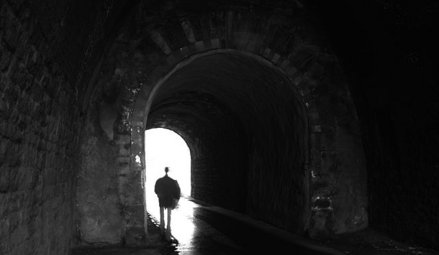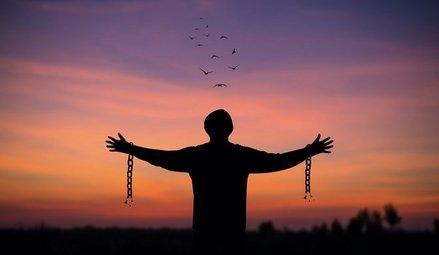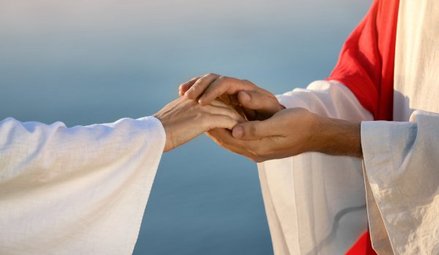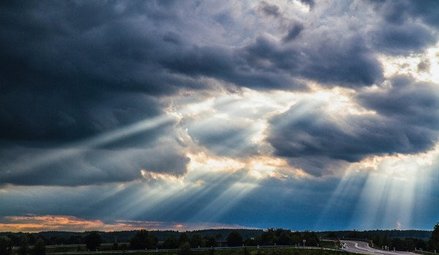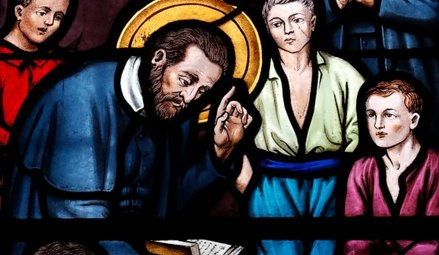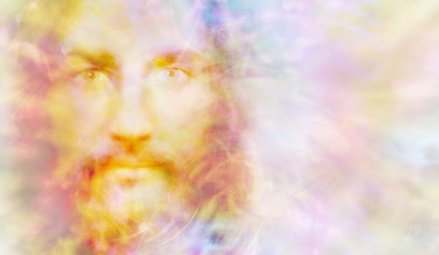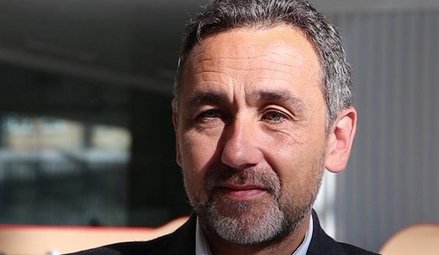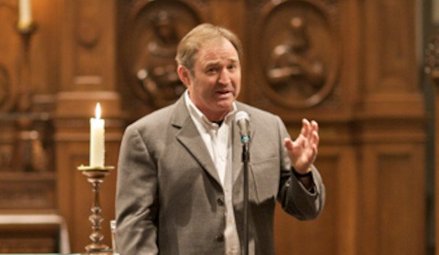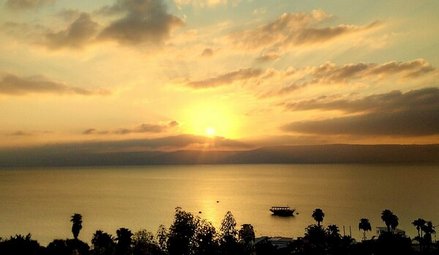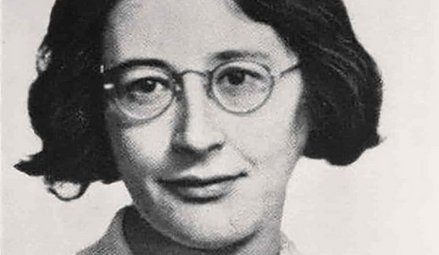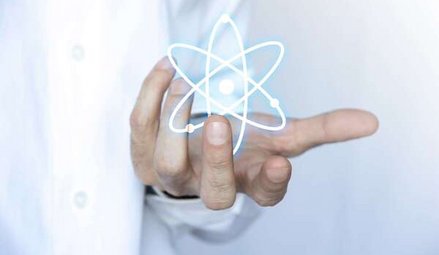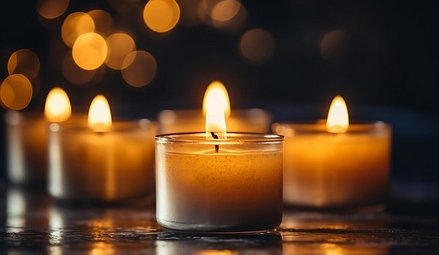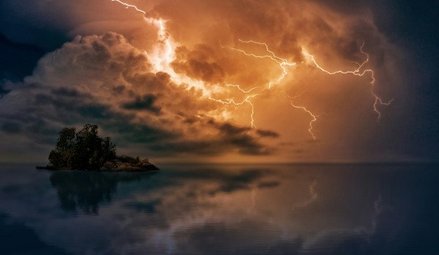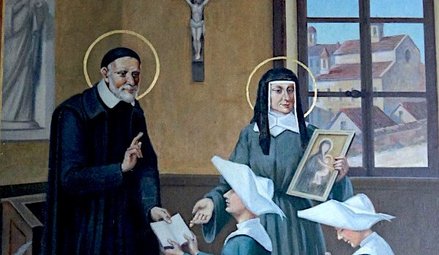- By theme
- Jesus
- The many proofs of Christ’s resurrection
- Saint Thomas Aquinas: God gave all the divine proofs we needed to believe
- The surpassing power of Christ's word
- Lewis’s trilemma: a proof of Jesus’s divinity
- God saves: the power of the holy name of Jesus
- Jesus spoke and acted as God's equal
- Jesus' divinity is actually implied in the Koran
- Jesus came at the perfect time of history
- Rabbinical sources testify to Jesus' miracles
- Mary
- The Church
- The Bible
- An enduring prophecy and a series of miraculous events preventing the reconstruction of the Temple
- The authors of the Gospels were either eyewitnesses or close contacts of those eyewitnesses
- Onomastics support the historical reliability of the Gospels
- The New Testament was not altered
- The New Testament is the best-attested manuscript of Antiquity
- The Gospels were written too early after the facts to be legends
- Archaeological finds confirm the reliability of the New Testament
- The criterion of embarrassment proves that the Gospels tell the truth
- The dissimilarity criterion strengthens the case for the historical reliability of the Gospels
- 84 details in Acts verified by historical and archaeological sources
- The unique prophecies that announced the Messiah
- The time of the coming of the Messiah was accurately prophesied
- The prophet Isaiah's ultra accurate description of the Messiah's sufferings
- Daniel's "Son of Man" is a portrait of Christ
- The Apostles
- Saint Peter, prince of the apostles
- Saint John the Apostle: an Evangelist and Theologian who deserves to be better known (d. 100)
- Saint Matthew, apostle, evangelist and martyr (d. 61)
- James the Just, “brother” of the Lord, apostle and martyr (d. 62 AD)
- Saint Matthias replaces Judas as an apostle (d. 63)
- The martyrs
- The protomartyr Saint Stephen (d. 31)
- Polycarp, bishop of Smyrna, disciple of John and martyr (d. 155)
- Justin Martyr: philosopher and apologist (d.165)
- Saint Blandina and the Martyrs of Lyon: the fortitude of faith (177 AD)
- Saint Agatha stops a volcano from destroying the city of Catania (d. 251)
- Saint Lucy of Syracuse, virgin and martyr for Christ (d. 304)
- Saint Boniface propagates Christianity in Germany (d. 754)
- Thomas More: “The king’s good servant, but God’s first”
- The martyrdom of Paul Miki and his companions (d. 1597)
- The martyrs of Angers and Avrillé (1794)
- The Martyrs of Compiègne (1794)
- The Vietnamese martyrs Father Andrew Dung-Lac and his 116 companions (17th-19th centuries)
- He braved torture to atone for his apostasy (d. 1818)
- Blaise Marmoiton: the epic journey of a missionary to New Caledonia (d. 1847)
- The Uganda martyrs: a recurring pattern in the persecution of Christians (1885)
- José Luis Sanchez del Rio, martyred at age 14 for Christ the King (d. 1928)
- Saint Maximilian Kolbe, Knight of the Immaculate (d. 1941)
- The monks
- The Desert Fathers (3rd century)
- Saint Anthony of the Desert, a father of monasticism (d. 356)
- Saint Benedict, father of Western monasticism (d. 550)
- Saint Bruno the Carthusian (d.1101): the miracle of a hidden life
- Blessed Angelo Agostini Mazzinghi: the Carmelite with flowers pouring from his mouth (d. 1438)
- Monk Abel of Valaam's accurate prophecies about Russia (d. 1841)
- The more than 33,000 miracles of Saint Charbel Maklouf (d. 1898)
- Saint Pio of Pietrelcina (d. 1968): How God worked wonders through "a poor brother who prays"
- The surprising death of Father Emmanuel de Floris (d. 1992)
- The prophecies of Saint Paisios of Mount Athos (d. 1994)
- The saints
- Saints Anne and Joachim, parents of the Virgin Mary (19 BC)
- Saint Nazarius, apostle and martyr (d. 68 or 70)
- Ignatius of Antioch: successor of the apostles and witness to the Gospel (d. 117)
- Saint Gregory the Miracle-Worker (d. 270)
- Saint Martin of Tours: patron saint of France, father of monasticism in Gaul, and the first great leader of Western monasticism (d. 397)
- Saint Augustine of Canterbury evangelises England (d. 604)
- Saint Lupus, the bishop who saved his city from the Huns (d. 623)
- Saint Rainerius of Pisa: from musician to merchant to saint (d. 1160)
- Saint Dominic of Guzman (d.1221): an athlete of the faith
- Saint Francis, the poor man of Assisi (d. 1226)
- Saint Anthony of Padua: "everyone’s saint"
- Saint Rose of Viterbo or How prayer can transform the world (d. 1252)
- Saint Simon Stock receives the scapular of Mount Carmel from the hands of the Virgin Mary
- The unusual boat of Saint Basil of Ryazan
- Saint Agnes of Montepulciano's complete God-confidence (d. 1317)
- The extraordinary conversion of Michelina of Pesaro
- Saint Peter Thomas (d. 1366): a steadfast trust in the Virgin Mary
- Saint Rita of Cascia: hoping against all hope
- Saint Catherine of Genoa and the Fire of God's love (d. 1510)
- Saint Anthony Mary Zaccaria, physician of bodies and souls (d. 1539)
- Saint Ignatius of Loyola (d. 1556): "For the greater glory of God"
- Brother Alphonsus Rodríguez, SJ: the "holy porter" (d. 1617)
- Martin de Porres returns to speed up his beatification (d. 1639)
- Virginia Centurione Bracelli: When God is the only goal, all difficulties are overcome (d.1651)
- Saint Marie of the Incarnation, "the Teresa of New France" (d.1672)
- St. Francis di Girolamo's gift of reading hearts and souls (d. 1716)
- Rosa Venerini: moving in the ocean of the Will of God (d. 1728)
- Saint Jeanne-Antide Thouret: heroic perseverance and courage (d. 1826)
- Seraphim of Sarov (1759-1833): the purpose of the Christian life is to acquire the Holy Spirit
- Camille de Soyécourt, filled with divine fortitude (d. 1849)
- Bernadette Soubirous, the shepherdess who saw the Virgin Mary (1858)
- Saint John Vianney (d. 1859): the global fame of a humble village priest
- Gabriel of Our Lady of Sorrows, the "Gardener of the Blessed Virgin" (d. 1862)
- Father Gerin, the holy priest of Grenoble (1863)
- Blessed Francisco Palau y Quer: a lover of the Church (d. 1872)
- Saints Louis and Zelie Martin, the parents of Saint Therese of Lisieux (d. 1894 and 1877)
- The supernatural maturity of Francisco Marto, “contemplative consoler of God” (d. 1919)
- Saint Faustina, apostle of the Divine Mercy (d. 1938)
- Brother Marcel Van (d.19659): a "star has risen in the East"
- Doctors
- The mystics
- Lutgardis of Tongeren and the devotion to the Sacred Heart
- Saint Angela of Foligno (d. 1309) and "Lady Poverty"
- Saint John of the Cross: mystic, reformer, poet, and universal psychologist (+1591)
- Blessed Anne of Jesus: a Carmelite nun with mystical gifts (d.1621)
- Catherine Daniélou: a mystical bride of Christ in Brittany
- Saint Margaret Mary sees the "Heart that so loved mankind"
- Jesus makes Maria Droste zu Vischering the messenger of his Divine Heart (d. 1899)
- Mother Yvonne-Aimée of Jesus' predictions concerning the Second World War (1922)
- Sister Josefa Menendez, apostle of divine mercy (d. 1923)
- Edith Royer (d. 1924) and the Sacred Heart Basilica of Montmartre
- Rozalia Celak, a mystic with a very special mission (d. 1944)
- Visionaries
- Saint Perpetua delivers her brother from Purgatory (203)
- María de Jesús de Ágreda, abbess and friend of the King of Spain
- Discovery of the Virgin Mary's house in Ephesus (1891)
- Sister Benigna Consolata: the "Little Secretary of Merciful Love" (d. 1916)
- Maria Valtorta's visions match data from the Israel Meteorological Service (1943)
- Berthe Petit's prophecies about the two world wars (d. 1943)
- Maria Valtorta saw only one pyramid at Giza in her visions... and she was right! (1944)
- The location of Saint Peter's village seen in a vision before its archaeological discovery (1945)
- The 700 extraordinary visions of the Gospel received by Maria Valtorta (d. 1961)
- The amazing geological accuracy of Maria Valtorta's writings (d. 1961)
- Maria Valtorta's astronomic observations consistent with her dating system
- Discovery of an ancient princely house in Jerusalem, previously revealed to a mystic (d. 1961)
- Mariette Kerbage, the seer of Aleppo (1982)
- The 20,000 icons of Mariette Kerbage (2002)
- The popes
- The great witnesses of the faith
- Saint Augustine's conversion: "Why not this very hour make an end to my uncleanness?" (386)
- Thomas Cajetan (d. 1534): a life in service of the truth
- Madame Acarie, "the servant of the servants of God" (d. 1618)
- Blaise Pascal (d.1662): Biblical prophecies are evidence
- Madame Élisabeth and the sweet smell of virtue (d. 1794)
- Jacinta, 10, offers her suffering to save souls from hell (d. 1920)
- Father Jean-Édouard Lamy: "another Curé of Ars" (d. 1931)
- Christian civilisation
- The depth of Christian spirituality
- John of the Cross' Path to perfect union with God based on his own experience
- The dogma of the Trinity: an increasingly better understood truth
- The incoherent arguments against Christianity
- The "New Pentecost": modern day, spectacular outpouring of the Holy Spirit
- The Christian faith explains the diversity of religions
- Cardinal Pierre de Bérulle (d.1629) on the mystery of the Incarnation
- Christ's interventions in history
- Marian apparitions and interventions
- The Life-giving Font of Constantinople
- Apparition of Our Lady of La Treille in northern France: prophecy and healings (600)
- Our Lady of Virtues saves the city of Rennes in Bretagne (1357)
- Mary stops the plague epidemic at Mount Berico (1426)
- Our Lady of Miracles heals a paralytic in Saronno (1460)
- Cotignac: the first apparitions of the Modern Era (1519)
- Savona: supernatural origin of the devotion to Our Lady of Mercy (1536)
- The Virgin Mary delivers besieged Christians in Cusco, Peru
- The victory of Lepanto and the feast of Our Lady of the Rosary (1571)
- The apparitions to Brother Fiacre (1637)
- The “aldermen's vow”, or the Marian devotion of the people of Lyon (1643)
- Our Lady of Nazareth in Plancoët, Brittany (1644)
- Our Lady of Laghet (1652)
- Saint Joseph’s apparitions in Cotignac, France (1660)
- Heaven confides in a shepherdess of Le Laus (1664-1718)
- Zeitoun, a two-year miracle (1968-1970)
- The Holy Name of Mary and the major victory of Vienna (1683)
- Heaven and earth meet in Colombia: the Las Lajas shrine (1754)
- The five Marian apparitions that traced an "M" over France, and its new pilgrimage route
- A series of Marian apparitions and prophetic messages in Ukraine since the 19th century (1806)
- "Consecrate your parish to the Immaculate Heart of Mary" (1836)
- At La Salette, Mary wept in front of the shepherds (1846)
- Our Lady of Champion, Wisconsin: the first and only approved apparition of Mary in the US (1859)
- Gietrzwald apparitions: heavenly help to a persecuted minority
- The silent apparition of Knock Mhuire in Ireland (1879)
- Mary "Abandoned Mother" appears in a working-class district of Lyon, France (1882)
- The thirty-three apparitions of the Virgin Mary in Beauraing (1932)
- "Our Lady of the Poor" appears eight times in Banneux (1933)
- Fontanelle-Montichiari apparitions of Our Lady "Rosa Mystica" (1947)
- Mary responds to the Vows of the Polish Nation (1956)
- Zeitoun apparitions
- The Virgin Mary comes to France's rescue by appearing at L'Ile Bouchard (1947)
- Maria Esperanza Bianchini and Mary, Mary, Reconciler of Peoples and Nations (1976)
- Luz Amparo and the El Escorial apparitions
- The extraordinary apparitions of Medjugorje and their worldwide impact
- The Virgin Mary prophesied the 1994 Rwandan genocide (1981)
- Our Lady of Soufanieh's apparition and messages to Myrna Nazzour (1982)
- The Virgin Mary heals a teenager, then appears to him dozens of times (1986)
- Seuca, Romania: apparitions and pleas of the Virgin Mary, "Queen of Light" (1995)
- Angels and their manifestations
- Mont Saint-Michel: Heaven watching over France
- The revelation of the hymn Axion Estin by the Archangel Gabriel (982)
- Angels give a supernatural belt to the chaste Thomas Aquinas (1243)
- The constant presence of demons and angels in the life of St Frances of Rome (d. 1440)
- Mother Yvonne-Aimée escapes from prison with the help of an angel (1943)
- Saved by Angels: The Miracle on Highway 6 (2008)
- Exorcisms in the name of Christ
- A wave of charity unique in the world
- Saint Peter Nolasco: a life dedicated to ransoming enslaved Christians (d. 1245)
- Rita of Cascia forgives her husband's murderer (1404)
- Saint Angela Merici: Christ came to serve, not to be served (d. 1540)
- Saint John of God: a life dedicated to the care of the poor, sick and those with mental disorders (d. 1550)
- Saint Camillus de Lellis, reformer of hospital care (c. 1560)
- Blessed Alix Le Clerc, encouraged by the Virgin Mary to found schools (d. 1622)
- Saint Vincent de Paul (d. 1660), apostle of charity
- Marguerite Bourgeoys, Montreal's first teacher (d. 1700)
- Frédéric Ozanam, inventor of the Church's social doctrine (d. 1853)
- Damian of Molokai: a leper for Christ (d. 1889)
- Pier Giorgio Frassati (d.1925): heroic charity
- Saint Dulce of the Poor, the Good Angel of Bahia (d. 1992)
- Mother Teresa of Calcutta (d. 1997): an unshakeable faith
- Heidi Baker: Bringing God's love to the poor and forgotten of the world
- Amazing miracles
- The miracle of liquefaction of the blood of St. Januarius (d. 431)
- The miracles of Saint Anthony of Padua (d. 1231)
- Saint Pius V and the miracle of the Crucifix (1565)
- Saint Philip Neri calls a teenager back to life (1583)
- The resurrection of Jérôme Genin (1623)
- Saint Francis de Sales brings back to life a victim of drowning (1623)
- Saint John Bosco and the promise kept beyond the grave (1839)
- The day the sun danced at Fatima (1917)
- Pius XII and the miracle of the sun at the Vatican (1950)
- When Blessed Charles de Foucauld saved a young carpenter named Charle (2016)
- Reinhard Bonnke: 89 million conversions (d. 2019)
- Miraculous cures
- The royal touch: the divine thaumaturgic gift granted to French and English monarchs (11th-19th centuries)
- With 7,500 cases of unexplained cures, Lourdes is unique in the world (1858-today)
- Our Lady at Pellevoisin: "I am all merciful" (1876)
- Mariam, the "little thing of Jesus": a saint from East to West (d.1878)
- The miraculous healing of Marie Bailly and the conversion of Dr. Alexis Carrel (1902)
- Gemma Galgani: healed to atone for sinners' faults (d. 1903)
- The miraculous cure of Blessed Maria Giuseppina Catanea
- The extraordinary healing of Alice Benlian in the Church of the Holy Cross in Damascus (1983)
- The approved miracle for the canonization of Juan Diego Cuauhtlatoatzin (1990)
- Healed by St Charbel Makhlouf, her scars bleed each month for the benefit of unbelievers (1993)
- The miracle that led to Brother André's canonisation (1999)
- Bruce Van Natta's intestinal regrowth: an irrefutable miracle (2007)
- He had “zero” chance of living: a baby's miraculous recovery (2015)
- Manouchak, operated on by Saint Charbel (2016)
- How Maya was cured from cancer at Saint Charbel's tomb (2018)
- Preserved bodies of the saints
- Dying in the odour of sanctity
- The body of Saint Cecilia found incorrupt (d. 230)
- Saint Claudius of Besançon: a quiet leader, a calm presence, and a strong belief in the value of prayer (d. 699)
- Stanislaus Kostka's burning love for God (d. 1568)
- Saint Germaine of Pibrac: God's little Cinderella (d. 1601)
- Blessed Antonio Franco, bishop and defender of the poor (d. 1626)
- Giuseppina Faro, servant of God and of the poor (d. 1871)
- The incorrupt body of Marie-Louise Nerbollier, the visionary from Diémoz (d. 1910)
- The great exhumation of Saint Charbel (1950)
- Bilocations
- Inedias
- Levitations
- Lacrimations and miraculous images
- Saint Juan Diego's tilma (1531)
- The Rue du Bac apparitions of the Virgin Mary to St. Catherine Labouré (Paris, 1830)
- Mary weeps in Syracuse (1953)
- Teresa Musco (d.1976): salvation through the Cross
- Soufanieh: A flow of oil from an image of the Virgin Mary, and oozing of oil from the face and hands of Myrna Nazzour (1982)
- The Saidnaya icon exudes a wonderful fragrance (1988)
- Our Lady weeps in a bishop's hands (1995)
- Stigmates
- The venerable Lukarda of Oberweimar shares her spiritual riches with her convent (d. 1309)
- Florida Cevoli: a heart engraved with the cross (d. 1767)
- Blessed Maria Grazia Tarallo, mystic and stigmatist (d. 1912)
- Saint Padre Pio: crucified by Love (1918)
- Elena Aiello: "a Eucharistic soul"
- A Holy Triduum with a Syrian mystic, witnessing the sufferings of Christ (1987)
- A Holy Thursday in Soufanieh (2004)
- Eucharistic miracles
- Lanciano: the first and possibly the greatest Eucharistic miracle (750)
- A host came to her: 11-year-old Imelda received Communion and died in ecstasy (1333)
- Faverney's hosts miraculously saved from fire
- A tsunami recedes before the Blessed Sacrament (1906)
- Buenos Aires miraculous host sent to forensic lab, found to be heart muscle (1996)
- Relics
- The Veil of Veronica, known as the Manoppello Image
- For centuries, the Shroud of Turin was the only negative image in the world
- The Holy Tunic of Argenteuil's fascinating history
- Saint Louis (d. 1270) and the relics of the Passion
- The miraculous rescue of the Shroud of Turin (1997)
- A comparative study of the blood present in Christ's relics
- Jews discover the Messiah
- Francis Xavier Samson Libermann, Jewish convert to Catholicism (1824)
- Our Lady of the Miraculous Medal and the conversion of Alphonse Ratisbonne (1842)
- Max Jacob: a liberal gay Jewish artist converts to Catholicism (1909)
- Edith Stein - Saint Benedicta of the Cross: "A daughter of Israel who, during the Nazi persecutions, remained united with faith and love to the Crucified Lord, Jesus Christ, as a Catholic, and to her people as a Jew"
- Patrick Elcabache: a Jew discovers the Messiah after his mother is miraculously cured in the name of Jesus
- Olivier's conversion story: from Pesach to the Christian Easter (2000)
- Cardinal Aron Jean-Marie Lustiger (d. 2007): Chosen by God
- Muslim conversions
- He met Jesus while looking for Muhammad (1990)
- Selma's journey to baptism (1996)
- Soumia, converted to Jesus as she hears Christmas carols (2003)
- How Aïsha, a Muslim convert, found Jesus (2004)
- Amir chooses Christ, at the risk of becoming homeless (2004)
- Souad Brahimi: brought to Jesus by Mary (2012)
- Pursued by God: Khadija's story (2023)
- Buddhist conversions
- Atheist conversions
- The conversion of an executioner during the Terror (1830)
- God woos a poet's heart: the story of Paul Claudel's conversion (1886)
- From agnostic to Catholic Trappist monk (1909)
- Dazzled by God: Madeleine Delbrêl's story (1924)
- C.S. Lewis, the reluctant convert (1931)
- The day André Frossard met Christ in Paris (1935)
- MC Solaar's rapper converts after experiencing Jesus' pains on the cross
- Father Sébastien Brière, converted at Medjugorje (2003)
- Franca Sozzani, the "Pope of fashion" who wanted to meet the Pope (2016)
- Nelly Gillant: from Reiki Master to Disciple of Christ (2018)
- Testimonies of encounters with Christ
- Near-death experiences (NDEs) confirm Catholic doctrine on the Four Last Things
- The NDE of Saint Christina the Astonishing, a source of conversion to Christ (1170)
- Jesus audibly calls Alphonsus Liguori to follow him (1723)
- Blessed Dina Bélanger (d. 1929): loving God and letting Jesus and Mary do their job
- Gabrielle Bossis: He and I
- André Levet's conversion in prison
- Journey between heaven and hell: a "near-death experience" (1971)
- Jesus' message to Myrna Nazzour (1984)
- Alicja Lenczewska: conversations with Jesus (1985)
- Vassula Ryden and the "True Life in God" (1985)
- Nahed Mahmoud Metwalli: from persecutor to persecuted (1987)
- The Bible verse that converted a young Algerian named Elie (2000)
- Invited to the celestial court: the story of Chantal (2017)
- Providential stories
- The superhuman intuition of Saint Pachomius the Great
- Ambrose of Milan finds the bodies of the martyrs Gervasius and Protasius (386)
- Germanus of Auxerre's prophecy about Saint Genevieve's future mission, and protection of the young woman (446)
- Seven golden stars reveal the future location of the Grande Chartreuse Monastery (1132)
- The supernatural reconciliation of the Duke of Aquitaine (1134)
- Saint Zita and the miracle of the cloak (13th c.)
- Joan of Arc: "the most beautiful story in the world"
- John of Capistrano saves the Church and Europe (1456)
- A celestial music comforts Elisabetta Picenardi on her deathbed (d. 1468)
- Gury of Kazan: freed from his prison by a "great light" (1520)
- The strange adventure of Yves Nicolazic (1623)
- Julien Maunoir miraculously learns Breton (1626)
- Pierre de Keriolet: with Mary, one cannot be lost (1636)
- How Korea evangelized itself (18th century)
- A hundred years before it happened, Saint Andrew Bobola predicted that Poland would be back on the map (1819)
- The prophetic poem about John Paul II (1840)
- Don Bosco's angel dog: Grigio (1854)
- The purifying flames of Sophie-Thérèse de Soubiran La Louvière (1861)
- Thérèse of Lisieux saved countless soldiers during the Great War
- Lost for over a century, a Russian icon reappears (1930)
- In 1947, a rosary crusade liberated Austria from the Soviets (1946-1955)
- The discovery of the tomb of Saint Peter in Rome (1949)
- He should have died of hypothermia in Soviet jails (1972)
- God protects a secret agent (1975)
- Flowing lava stops at church doors (1977)
- A protective hand saved John Paul II and led to happy consequences (1981)
- Mary Undoer of Knots: Pope Francis' gift to the world (1986)
- Edmond Fricoteaux's providential discovery of the statue of Our Lady of France (1988)
- The Virgin Mary frees a Vietnamese bishop from prison (1988)
- The miracles of Saint Juliana of Nicomedia (1994)
- Global launch of "Pilgrim Virgins" was made possible by God's Providence (1996)
- The providential finding of the Mary of Nazareth International Center's future site (2000)
- Syrian Monastery shielded from danger multiple times (2011-2020)
- Jesus
- Who are we?
- Make a donation
TOUTES LES RAISONS DE CROIRE
Témoignages de rencontres avec le Christ
n°150
Tréguier Hospital (France, Côtes-d'Armor, northwestern France)
August 14, 1971
Journey between heaven and hell: a "near-death experience" (1971)
In 1971, Anne-Marie Le Goff, pregnant with her sixth child, almost died at the wheel of her car in a terrible storm. She suffered a serious haemorrhage and was taken to the hospital in Tréguier, where she was pronounced dead. Anne-Marie then had an incredibly powerful "near-death experience" (NDE), during which she saw Jesus on the cross and met the Virgin Mary. After this experience, her life was never the same. She recounts the experience in her book D'un monde à l'autre (2008).
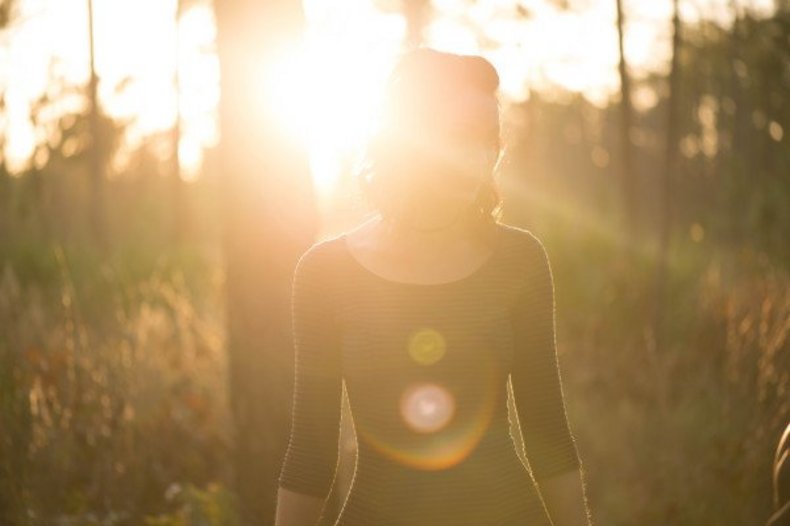
Unsplash/ Natalie Grainger
Les raisons d'y croire :
- Mentally healthy, Anne-Marie Le Goff never suffered any delusions or hallucinatory episodes. Before her NDE, she led a busy professional, family and social life.
- Anne-Marie's experience is not a dream: the successive scenes do not follow one another in a disjointed, anarchic way, but in a logical way. What's more, they obey the laws of optics (the size of beings and objects increases the closer she gets to them, and vice versa), which is totally different from the mental activity at play in a dream.
- It is not a hallucination either: declared "dead" before the start of the experience, Anne-Marie's brain was unable to produce any "perception in the absence of an external stimulus that has the compelling sense of reality" (the definition of a hallucination), since death is defined precisely by the interruption of cerebral activity.
- The NDE caused a prophetic intuition: during her "journey", Anne-Marie heard the sound of a harp and thought it was her daughter Elisabeth playing the instrument. Although she never told her children about her experience, four years later Elisabeth decided to learn to play the harp.
- Although clinically "dead" and lying on the operating table, Anne-Marie had inexplicable sensory and psychological perceptions: in addition to "bird's-eye" views of her own body and the people around her - in great detail - she felt the emotions and reactions of the doctors, nurses and nuns.
- Anne-Marie woke up within a period of time that is unusually short in medical terms, just a few minutes after leaving the operating room, where she had been declared "dead".
- The descriptions and words reported by Anne-Marie immediately after her "return" are devoid of any theological error, and shed light in their own way on essential points of Catholic Church teaching: the Incarnation, the communion of saints, Mary's role in the economy of salvation, etc.
- Anne-Marie's complete recovery happened on August 15, the feast of the Assumption of the Virgin Mary. This is a remarkable coincidence, given the important role played by the Virgin Mary during Anne-Marie's NDE.
- The fruits of this NDE are varied, numerous and unusual: from a nominal Catholic, Anne-Marie became the leader of a fervent and fruitful prayer group, recognised and supported by the clergy; an average reader, she became a poet and songwriter (she recorded an album in 1981); a teacher, she became a missionary among hearing-impaired children, etc.
- Even if we attribute a natural, medical origin to Anne-Marie's experience - which has never been ruled, since she had previouslybeen declared dead by the doctors - there is no rational explanation for her spiritual and artistic conversion after her return to life.
Synthèse :
One evening in July 1971, Anne-Marie Le Goff, a teacher, mother and pregnant with her sixth child, was driving along the road leading from Rennes (France, Ille-et-Vilaine), where she lives with her husband Yves and their five children, to Plougrescant (France, Côtes-d'Armor), where the couple have a vacation home. Yves followed her in a van carrying two of the children, their suitcases and the equipment they would need for the four-week holiday.
Just outside Paimpol (France, Côtes-d'Armor), a terrible thunderstorm broke out. Hailstones "as big as pigeon eggs" crashed onto the soggy, slippery ground. Anne-Marie couldn't see twenty metres ahead. She could no longer control her car. Behind her, her husband was also panicking. Suddenly, Anne-Marie's car swerved to avoid an obstacle: the passengers felt the impact. The expectant mother felt a pain inside. Yves, who had come to the rescue, told her not to give up hope and that they had to leave at all costs, otherwise the car would be submerged. They arrived at their house in the middle of the night. It had taken them more than four hours to cover less than two hundred kilometres.
The following night, Anne-Marie suffered a small haemorrhage, which worried her in her condition. After unloading the equipment, Yves returned to Rennes where his job awaited him. His wife knew that she would have to stay there for three weeks. She called a doctor, who assured her that everything was fine and that her unborn baby was doing wonderfully.
The following August 14, late in the afternoon, Anne-Marie nearly fainted with a strong and extremely serious loss of blood. She barely had the strength to call her children for help. These managed to call a doctor, who immediately sent her to the hospital in Tréguier (France, Côtes-d'Armor).
Her husband was immediately alerted and rushed to the hospital, but it was already too late. Anne-Marie, lying on the operating table, had just been declared "dead" by the anaesthetist. This was the beginning of an incredible experience for her, the main stages of which are described below:
Anne-Marie reviewed her entire life. This is a phenomenon that has been perfectly identified in the context of NDEs. This life review isn't just a recalling of the major events of her life, but the totality of the facts, both material and moral, that had marked her life from birth to 1971: each of them was "judged", not by human justice, but by an incredible love.
While the vast majority of NDEs consist of a form of spiritual elevation, through a "tunnel of light", a very dark phase began for Anne-Marie. Seized by a "dreadful dizziness" she was literally sucked downwards, into a terrible, "icy cold ", "mineral" place where all life had disappeared. At the same time - and this is an important detail for the authenticity of the phenomenon - she was experiencing increasing moral pain as she fell into the "abyss". A practising believer, she began to doubt her faith in an "intolerable" way. It seemed to her that nothing existed beyond this earthly life. This was a form of dereliction, a "spiritual night" that Christian mystics have always known about. Plunged into a terrifying half-light, she felt as if she was shivering and, above all, that this state would last forever.
Suddenly, the darkness let in a little pale light, like the rays of the moon through thick fog. She looked up and there, a few dozen metres away, Anne-Marie saw Christ on the Cross. The shock was indescribable. At the foot of the Cross, she noticed a young man and a woman she could not recognise. Next to them stood another woman whose identity she also did not know.
Suddenly, she heard this message inside her, "as if it were being whispered to me" she said: "God took on this human life of yours to build a bridge between himself and mankind. He took on this human life in his Son Jesus [...] Jesus took on a body in the body of a woman, a woman who had nothing divine about her, who was entirely human." Then Jesus, from the Cross, said: "Mother, this is your daughter; Anne-Marie, this is your mother!"At that moment, the woman who had just been declared dead by the medical team, understood that the second unknown woman at the foot of the cross, next to Mary and John, was herself.
The third phase began with the lightening of the darkness. Anne-Marie didn't know how she moved: with her body (but which body, since she was dead?), or mentally? "I knew I was like on a cart", she herself said. She now has the impression of "climbing", of physically rising. As during the descent into the abyss, during which she had felt intense inner suffering, she now felt an indefinable peace invade her being, and the cold disappear as she rose: "the anxiety gradually left me". It was the equivalent of going through the luminous tunnel described by other people who experienced a NDE.
Anne-Marie reached a sort of "half-arched door, quite narrow ", beyond which an " impalpable curtain hides a space the colour of fire and rainbows ". At that moment, she felt perfectly at ease, penetrated by a gentle warmth that was both material and spiritual. A moment later, a kind of mist emerged from the curtain, and a silhouette slowly took shape in it, revealing the light, like "a photo negative". She added a detail that demolishes the theory of an hallucination or dream activity: "The further I went, the closer she got, and the more I could make out her outline: a small woman". Such an observation of the laws of optics - involuntary for Anne-Marie - destroys the idea of a cerebral cause for the NDE, because hallucinations and dreams twist, transform and modify reality, removing all logic from the phenomena perceived and confusing, for the most part, cause and effect.
Anne-Marie asked the stranger to reveal her name. It was Mary, the Mother of the Lord. The apparition said to her: "Look! Listen! You will tell others about it, you will share".At that moment, she felt herself thrown into the light, beyond the door that had stopped her movements. The "bliss" that invaded her was unlike anything she'd experienced here on earth. In the distance, more and more distinctly, she heard "wonderful" music. It was an invisible orchestra and choirs, but in their midst she thought she recognised her daughter Elisabeth, aged seven, playing the harp. At the time, however, the child did not play any instrument. Anne-Marie had no idea why she thought she had identified her daughter. In any case, she was very surprised when, four years later, Elisabeth told her "out of the blue" that she was going to study the harp. Anne-Marie never told her children about her adventure until they were adults.
Another striking detail: Anne-Marie recognised her mother's voice in the heavenly choir without any possible mistake. This person was alive at the time. But she died some time later.
Fourth moment: she entered "a kind of immense sun" the centre of which she could not look at. Gradually she was able to see a "great silhouette, gigantic, black, because it was too luminous and bright". She wanted to touch this figure, thinking of the woman who had been subject to bleeding for twelve years, who is cured by Jesus in the Gospel, by his cloak... The Virgin Mary said: "No! Not now. The time has not come."
In a flash she was on the other side of the door. This time, Mary was no longer a silhouette, but a young woman of indescribable beauty, with "large, dark brown almond-shaped eyes" and her hair "clearly visible". It was above all the "the depth of her gaze that penetrated me with infinite love." "You're going back and you're going to start!" she told her, promising to look after her. At these words, Anne-Marie realised that her feet were resting on "a kind of cloud suspended in space" and that, far away, she could see the operating table and her own body lying on it. "I could see a body lying on it, with nuns and nurses all around, crowding round and talking to the body in question..." She added an unimaginable experience: she felt the feelings and emotions of the people trying to save her: "I could feel their anxiety, their agitation." She noticed one of the sisters bending over her. The next thing she knew, she was back in her physical body. "And then! It was as if I closed my eyes and then opened them again! And I saw in my gaze the two eyes of the nun who was bending over me... I could hear her saying, as if in a fog: "She's here! She's come back!""
Anne-Marie felt pain in her limbs. When she saw the blood bag attached to her arm, the medical equipment and the oxygen mask being handed to her, she remembered the moments of bliss she had just experienced. On a psychological level, this experience was the catalyst for a profound and lasting conversion. Over and above the sadness caused by the loss of her baby, Anne-Marie rediscovered an incredible joy of living. She now spends more and more time in prayer, Bible reading and meditation, and her love of others has grown steadily. Her detachment from material things impresses all who know her.
What's even more incredible is that her natural gifts and human qualities have blossomed to a great extent. She became a poet, wrote songs for handicapped children, and gave musical and catechetical training sessions. She recorded an album in 1981, with the Petits chanteurs d'Aubervilliers and the support of Father Francis Méhaignerie, parish priest of Saint-Augustin in Rennes. Archbishop Paul Gouyon of Rennes, to whom Anne-Marie had sent the lyrics of her songs, sent her a letter of congratulations on April 22, 1981.
Above all, Anne-Marie founded a prayer group called Aïn Kariem, designed to spread "faith, joy and mad hope" by praying to God for childless couples and mothers separated from their infants. In 2000, Anne-Marie was reunited with Mother Cécile, an Augustinian nun who had surrounded her with affection in the operating room in 1971. During a telephone conversation, this sister, now very old, who had once been close to Mother Yvonne-Aimée de Malestroit, whose beatification process had begun, explained to Anne-Marie that she owed her life to the intercession of their foundress, whom all the nuns present had asked to intercede with God.
Patrick Sblachiero
Au-delà des raisons d'y croire :
Near-death experiences (NDEs) of people considered clinically dead, who unexpectedly come back to life, are currently multiplying everywhere, in every culture and on every continent, because resuscitation methods are much more effective today. It is interesting to note that the description of death and glimpses into the next life are in line with Christian teaching on the Four Last Things.
Aller plus loin :
Anne-Marie Le Goff, D'un monde à l'autre, Paris, F.-X. de Guibert, 2008.
En savoir plus :Near-Death Experiences Examined: Medical Findings and Testimonies from Lourdes by Patrick Theillier M.D., PublishDrive (February 1, 2017)
Imagine Heaven: Near-Death Experiences, God's Promises, and the Exhilarating Future That Awaits You by John Burke and Don Piper, Baker Books; Illustrated edition (October 20, 2015)
- The general article in 1000 raisons de croire (1000 reasons to believe), which presents the cases of NDEs and the associated video
Near-Death Experiences Examined: Medical Findings and Testimonies from Lourdes by Patrick Theillier M.D., PublishDrive (February 1, 2017)
Imagine Heaven: Near-Death Experiences, God's Promises, and the Exhilarating Future That Awaits You by John Burke and Don Piper, Baker Books; Illustrated edition (October 20, 2015)










